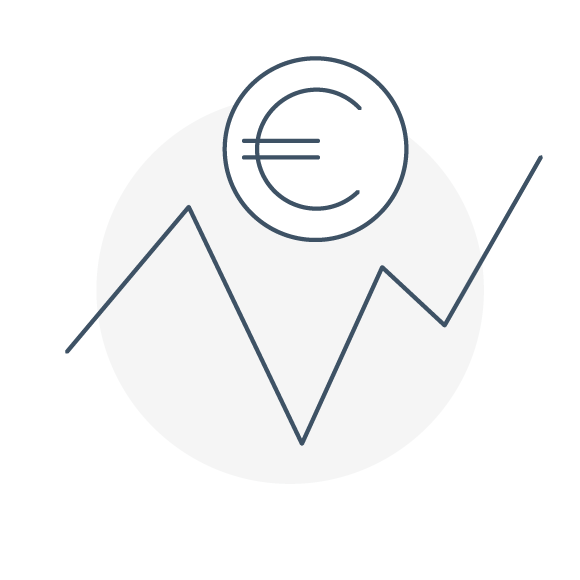All official European Union website addresses are in the europa.eu domain.
See all EU institutions and bodies
This briefing provides an overview of the EU policy framework on sustainable finance, which seeks to redirect capital flows towards sustainable activities to advance the EU’s green transition. It also evaluates the EU’s progress in addressing green investment needs to achieve sustainability goals. Briefing 2.8 on climate financing covers investments in climate change mitigation. The cost of inaction is covered in briefing 2.6.
Key messages
Europe needs to mobilise approximately 4.1% of its gross domestic product (GDP) annually until 2030 to drive the green transition and secure a sustainable future.
The Recovery and Resilience Facility (RRF) is due to end in 2027. This may trigger a sizeable shortfall in the funding available for green investments.
The scale of investment required is significant; however, the cost of inaction is significantly higher.
Key policies
Key policies in the area of financing for sustainability include the EU taxonomy for sustainable activities, the EU green bond standard (EUGB), the European Sustainability Reporting Standards (ESRS), the Corporate Sustainability Reporting Directive (CSRD), the Sustainable Finance Disclosure Regulation (SFDR) and the Corporate Sustainability Due Diligence Directive (CSDD). Public funds are available at the EU and Member State levels. The largest contribution currently comes from the RRF, which is set to end in 2027.
Past trends (10-15 years)
Improving trends/developments dominate
Establishing the EU’s regulatory framework for sustainable financing is considered a major step forward; it creates the conditions for financing the transition towards Europe’s sustainability goals. However, by the end of 2023, the total outstanding green debt financing for the non-financial sector was estimated to be EUR 1.15 trillion. This figure is fairly evenly distributed between green mortgages for households and corporate borrowing, including green bond financing.
Notably, only a small proportion of all green lending complies with the EU taxonomy criteria, underscoring the need for greater alignment to ensure green financial flows' credibility and effectiveness. Only a few companies currently report under the taxonomy framework, meaning that there is only a limited perspective on sustainable investments.
Outlook (10-15 years)
Trends/developments expected to show a mixed picture
There is a significant investment gap as green investment flows lag the investment needs of the Green Deal sustainability objectives. Achieving climate neutrality by 2050 requires significant public and private investments. In climate mitigation, the European Commission (EC) estimates an annual investment gap in energy of EUR2024 581 billion for 2021-2030. For the same period, the annual investment gap on climate adaptation is estimated at EUR 49 billion in pollution control, at EUR2024 41 billion in circular economy, at EUR2024 29 billion in water preservation, at EUR2024 21 billion and in biodiversity at EUR2024 21 billion. Overall, it is estimated that 4.1% of the EU’s 2024 GDP will be required to be additionally invested through to 2030 to address the European Green Deal (EGD)'s environmental objectives (Figure 1).
Sizeable public funds are available at the EU level to support the green transition. The RRF (under the NextGenerationEU programme) and the EU budget offer the largest contributions (Figure 2). There may be a noticeable shortfall in EU public funds. Estimates from the ECB suggest that this could total around EUR 54 billion by 2030 after the RRF expires at the end of 2026.
Prospects of meeting policy targets 2030/2050
2030: No specific policy targets
2050: No specific policy targets
Robustness
Significant investments will be required through to 2030 and beyond to achieve the EU economy’s green transition. While estimates of the required investment vary across institutions and are subject to considerable uncertainty, they consistently emphasise the need for accelerated and more ambitious efforts. They also point to the need for the private sector to finance most of these green investments.
Charts/maps
Figure 1. Annual investment gap until 2030 to meet the EGD's environmental objectives
Figure 2. Financing the EGD investment plan
Please select a resource that has a preview image available.
Further information
- ‘Platform on Sustainable Finance’, 2025: This EC advisory group develops and updates the EU Taxonomy, monitors financial flows and regularly publishes comments on legislative proposals.
- Platform on Sustainable Finance Intermediate report on monitoring capital flows to sustainable investments, 2024: The annex of this EC report contains an analysis of the EGD investment gap.
- ‘Mind the gap: Europe’s strategic investment needs and how to support them’, 2024: This EIB blog discusses Europe’s need for trillions of EUR to manage climate change. It also explores how EU and national policymakers can support the required projects in the context of low growth and high public debt levels.
- ‘Investments in the sustainability transition: leveraging green industrial policy against emerging constraints’, 2023: The key message in this EEA briefing is that the implementation of the EGD demands large investments.
- ‘High-Level Expert Group on sustainable finance (HLEG)’, 2016: This EC expert opinion piece reports on how the HLEG provided advice to the EC on how to steer the flow of public and private capital towards sustainable investments.
- a b cEC, 2021, Platform on Sustainable Finance - Technical Working Group - Taxonomy Pack for Feedback August 2021, p 100 (https://ec.europa.eu/info/sites/default/files/business_economy_euro/banking_and_finance/documents/210803-sustainable-finance-platform-report-technical-screening-criteria-taxonomy_en.pdf) accessed 28 March 2022.
- Communication from the Commission; European Commission, forthcoming SWD.a b
- ↵ECB, 2025, Investing in Europe’s Green Future: Green Investment Needs, Outlook and Obstacles to Funding the Gap (https://www.econstor.eu/bitstream/10419/311155/1/1914752511.pdf) accessed 15 September 2025.
